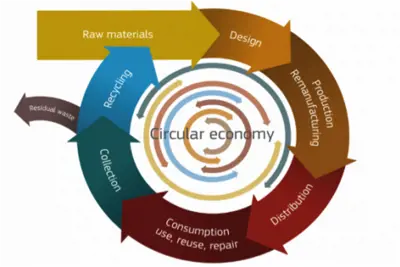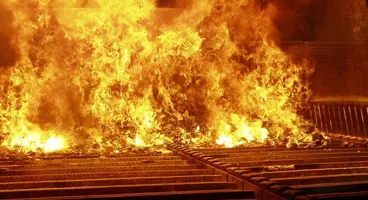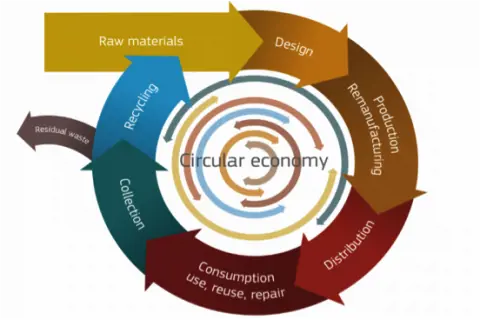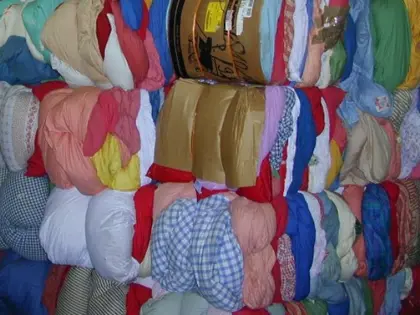Make – Take – Waste. This has been the economic and societal modus operandi for many years now. We take primary resources, make them into products for consumption and when the product no longer has a use - we simply throw it away. For too many years we have thought of our planet's resources as being unlimited, living too much in the present and not thinking about the welfare of future generations that will follow us. Waste is the final phase in a process known as 'linear economy'.
What are the consequences of this approach?
Let’s look at some facts.
By now there are more than seven and a half billion people in the world and the population is growing by roughly 80 million each year.
To “maintain” such a large population requires:
- 9.384 million tons of fuel annually (data from 2015, in 1973 it was 4.66 million)
- A total water consumption of about 4,001 km3/year (according to 2010 figures)
Society at large (including industry) produces:
- 32.294 million tons of CO2 in a year (data from 2015, in 1973 it was 15.458 million tons)
- Global MSW (municipal solid waste) of approximately 1.3 billion tons per year, which is expected to have increased to around 2.2 billion by 2025. Therefore, the total amount being produced will have doubled in under 10 years.
There is plenty more data and information of this kind to be found, and when considering the above figures we should really be asking ourselves the following questions:
- How long is the current approach sustainable?
- How can we do things differently?
Circular economy – the way to a sustainable future
Let’s start with waste - the leftovers of our consumption. In the EU-28 alone, in 2014:
- On average 16 tons of raw material per person was produced, of which 6 tons went on to become waste
- 2,053 million tons of waste were generated
- On average 481 kg of municipal waste per person were produced
- Households contributed only 8.3% of the total waste
- 2,320 million tons of waste was treated (including the treatment of 267 million tons imported into the EU)
 The figures are immense, meaning that there has to be a great deal of hidden potential. When considering this we should ask ourselves - how can we make the whole lifecycle more efficient, reduce our production and consumption levels and bring some of the generated waste back into the life cycle? The new approach is called “Circular economy”, since more material can “be kept” in the circle of production and consumption.
The figures are immense, meaning that there has to be a great deal of hidden potential. When considering this we should ask ourselves - how can we make the whole lifecycle more efficient, reduce our production and consumption levels and bring some of the generated waste back into the life cycle? The new approach is called “Circular economy”, since more material can “be kept” in the circle of production and consumption.
The main objective of the circular economy is to make economic systems and industrial processes more environmentally friendly and sustainable. Shifting to a circular economy is not a straight forward process and requires substantial changes in the value chain, such as; adapted design, better waste and water management, greater recycling and re-use of products.
Waste: Tapping into unused potential – increasing resource efficiency
Based on analysis made by the EU two main kinds of potential for waste have been identified:
- Turning waste into a resource - only around 1/3 was recycled and the rest incinerated or landfilled. Estimated additional potential for reuse / recycling is up to 600 million tons. If this material is lost then growth, job creation and competitiveness will be compromised and negative environmental impacts generated. The main objective is to recycle more in order to have more „waste“ which can be used as a resource. Recycling is a pre-condition for the circular economy.
- Waste as a source of energy: When waste cannot be recycled then the potential energy it contains should be recovered in all its forms through; incineration, anaerobic digestion and waste-derived fuels.
The key elements of the EU circular economy:
- A common EU target for recycling 65% of municipal waste, by 2030;
- A common EU target for recycling 75% of packaging waste, by 2030;
- Material-specific targets for different packaging materials;
- A binding landfill reduction target of 10%, by 2030.
When viewing the current figures a circular economy could have the following impact on our business in EU countries:
- An increase in separate collection
- From landfilling to incineration (energy recovery)
- Less incineration due to more recycling and reuse
- Waste prevention; lower waste streams expected in the future
Current status of the EU circular economy
Circular economy is now more and more frequently mentioned. However, it is important to be aware that there are two problems connected to this topic:
- The “legal” base is missing: Currently, there is an action plan which is still under discussion at the EU commission. Final recycling targets are still to be fixed, as well as the methods of calculation to be used. It will take some time until the action plan has been formally finalized by the EU and it will require more time to transfer the amended EU laws into national laws- However, we should remain prepared as these implementations are clearly approaching.
- The comparison of data from the different countries has not proved easy so far; with each EU country applying different methods for the counting of waste streams and the calculation of recycling targets, which has rendered the data from different countries more or less incomparable. One target of a circular economy is to harmonize these methods of definition and calculation.
FCC Environment CEE Group: contributing to the Circular Economy
FCC Environment CEE (.A.S.A. Group) is a leading sustainable waste management company in Central and South East Europe. We adhere to our mission statement „Service for the Future“ and contribute to a circular economy by; providing efficient waste management systems which implement modern collection, transport and waste treatment technologies, as well as minimizing and transforming waste itself into a valuable resource.
Each year, FCC Environment CEE brings more than half a million tons of secondary raw materials back to life through the use of precise sorting systems at every stage of the collection and separation process. In total, we have 95 collection yards, 17 transfer stations and 28 sorting plants.
FCC Environment CEE waste to energy plants and landfills are equipped with cogeneration units - which produce 200 GWh/a of energy. Thanks to our 12 RDF (alternative fuel treatment) and/or splitting plants FCC is able to produce a special fuel that can be used at cement factories or lime works equipped with rotary kilns. The addition of RDF allows for the replacement of conventional fossil fuels which in turn decreases the production of atmospherically damaging emissions.

Sources:
- http://www.worldometers.info/
- www.denkstatt.at
- http://www.fao.org/nr/water/aquastat/tables/WorldData-Withdrawal_eng.pdf
- http://siteresources.worldbank.org/INTURBANDEVELOPMENT/Resources/336387-1334852610766/Chap3.pdf
- https://ec.europa.eu/easme/en/news/r2-supporting-transition-circular-economy











